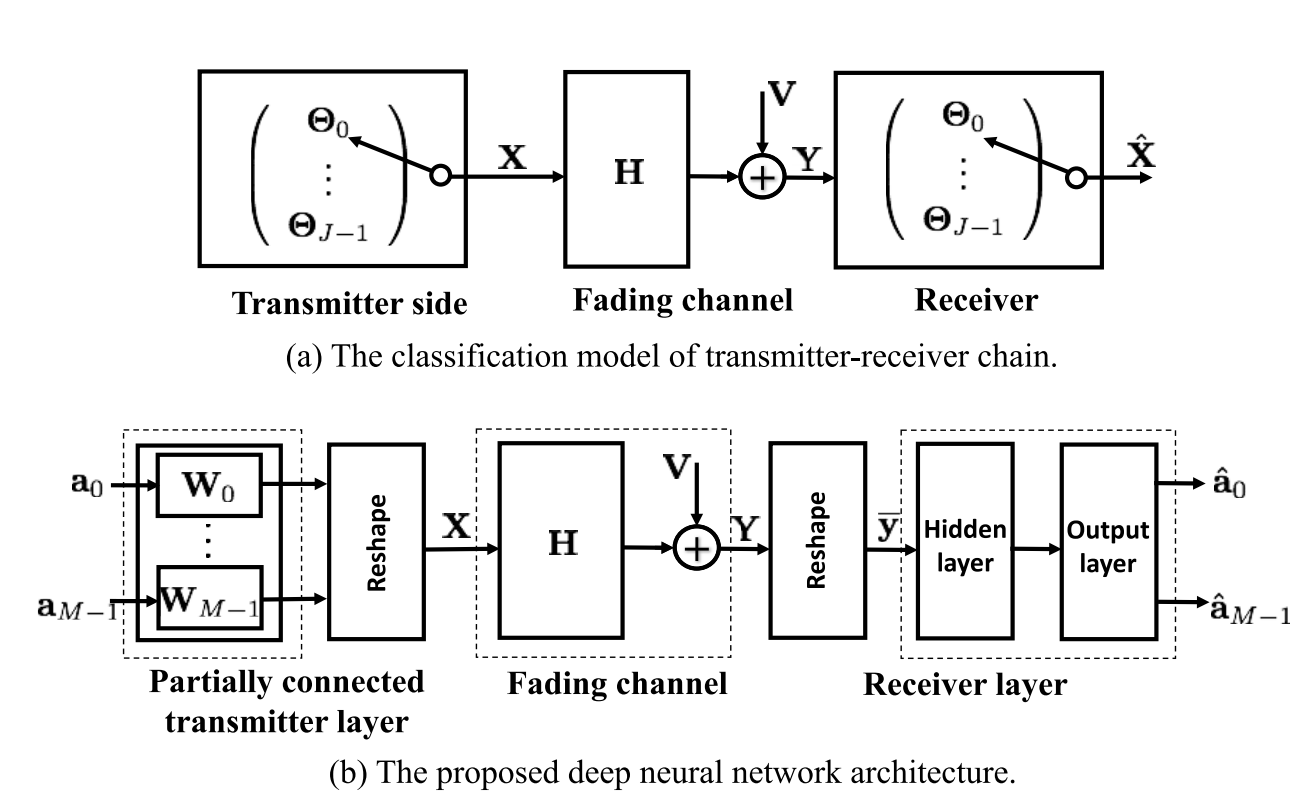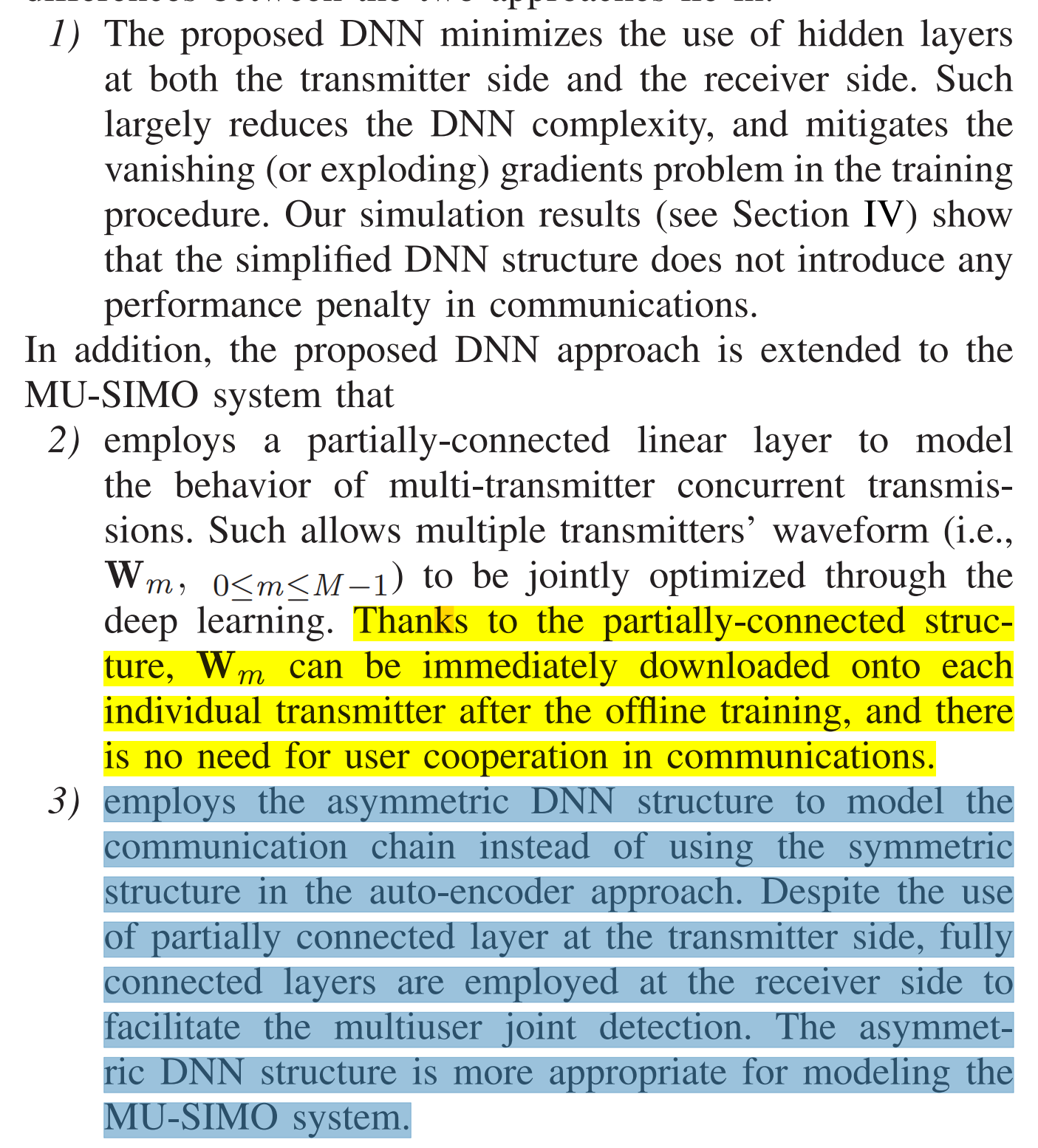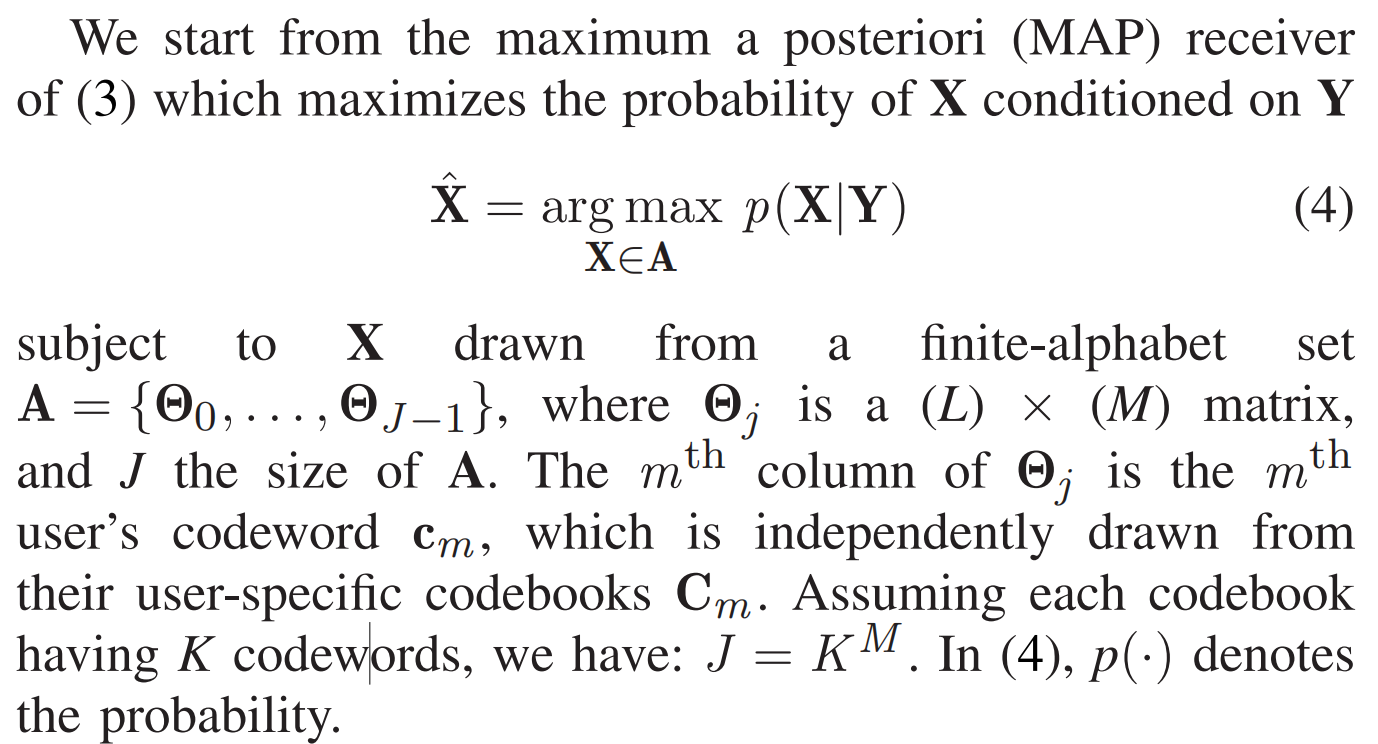Dense Network for Joint Transmitter and Receiver Noncoherent Codebook Design
Unsupervised Deep Learning for MU-SIMO Joint Transmitter and Noncoherent Receiver Design. Songyan Xue et.al. IEEE Wireless Communications Letters, February 2019 (pdf) (Citations 24)
Quick Overview
- Joint transmitter and ==noncoherent== receiver optimization fo MU-SIMO through unsupervised learning. Find the optimal waveform set for multiusers.
- Communication chain can be represented by a DNN with three essential layers.
- The first layer is a partially-connected linear layer responsible for multiuser waveform joint optimization.
- The others (the second and the third layers) are nonlinear dense layers for noncoherent multiuser detection at the received side

其是很简单,就是在收发机联合训练,找到最适合的波形,使得其能够在发射端分离出来。所谓的创新点还有:
- 减少hidden layers,从而减轻梯度爆炸或消失,并且性能不会收到损失。
- 采用部分链接的Dense层来模拟多发射机并行传输的行为。
- 非对称DNN结构。

Transmitter
Codebook for transmitter:

Choose a transmitter codebook to minimize the Channel Ambiguity.
Each codebook has codewords. So the available codebook for -th user is . The one-hot vector (uniformly distributed) has the size of , which denotes the chosen index of codebooks.

本文作者: Joffrey-Luo Cheng
本文链接: http://lcjoffrey.top/2024/01/17/dense4jointTxRxcodebookdesign/
版权声明: 本博客所有文章除特别声明外,均采用 CC BY-SA 4.0 协议 ,转载请注明出处!